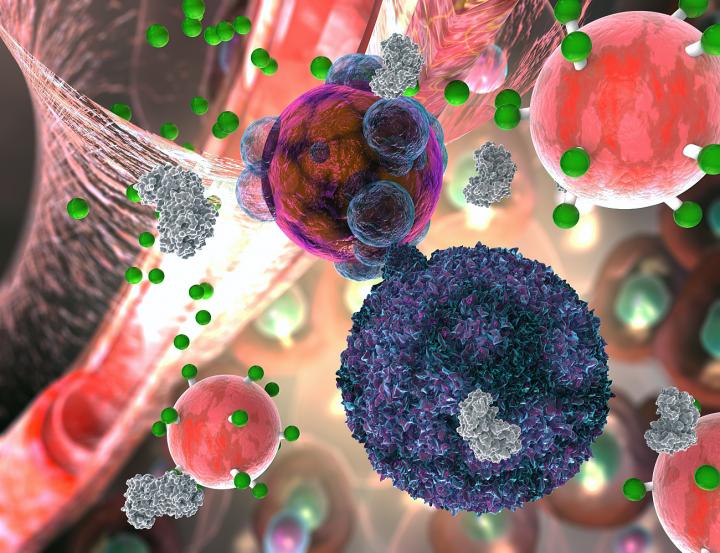Early detection of transplant rejection is critically important to the successful outcome of the transplant and the long-term health of the patient. Now, a team of researchers has developed a novel nanoparticle method that makes urine glow as soon as T cells initiate an attack on transplanted organs, serving as a non-invasive biomarker of early transplant rejection.
A team from the Georgia Institute of Technology and Emory University have published their findings in Nature Biomedical Engineering in an article titled, “Non-invasive early detection of acute transplant rejection via nanosensors of granzyme B activity.”
The diagnostic gold standard for detecting transplant rejection involves a core biopsy, which is invasive, has limited predictive power, and carries a morbidity risk. In addition, the transplanted organ may have already sustained serious damage when a biopsy reveals the rejection. The developing of novel screening methods is critical to identifying organ rejection earlier, more effectively, and without a needle.
“Right now, most tests are aimed at organ dysfunction, and sometimes they don’t signal there is a problem until organ function is below 50 percent,” said Andrew Adams, MD, PhD, an associate professor of surgery at Emory University School of Medicine and a co-senior author. “This [method] is sensitive enough to possibly detect budding rejection before you see significant injury to the transplanted organ and that could help clinicians treat early to prevent damage.”
The team used nanoparticles conjugated with a peptide substrate specific for the serine protease granzyme B, which is produced by recipient T cells during the onset of acute cellular rejection. The sensor particle detects granzyme B that, when present, pushes a transplanted organ’s cells into apoptosis.
“Before any organ damage can happen, T cells have to produce granzyme B, which is why this is an early detection method,” said Gabe Kwong, PhD, assistant professor in the Wallace H. Coulter department of biomedical engineering at Georgia Tech and Emory University and a co-senior author in the study.

The nanoparticles are put together with iron oxide in the middle like a ball and double-coated with dextran and polyethylene glycol, to keep the body from disposing of them too quickly. Bristles made of amino acids stick out from the iron ball with fluorescent “reporter” molecules attached to their tips.
The particles are injected intravenously. They are too big to accumulate in native tissue or to pass through the kidneys and out of the body but small enough to accumulate in the tissue of struggling transplanted organs, where they keep a lookout for rejection.
“The nanoparticles’ bristles mimic granzyme’s amino acid targets in the cells, so the enzyme cuts the bristles on the nanoparticle at the same time,” said Kwong. “That releases the reporter molecules, which are so small that they easily make it through the kidney’s filtration and go into the urine.”
The method was validated through systemic administration in mouse models of skin graft rejection. In these models, the nanosensors preferentially accumulate in allograft tissue where they are cleaved by granzyme B, releasing a fluorescent reporter that filters into the recipient’s urine. Urinalysis then discriminated the onset of rejection with high sensitivity and specificity before features of rejection were apparent in grafted tissues. Moreover, in mice treated with subtherapeutic levels of immunosuppressive drugs, the reporter signals in urine could be detected before graft failure. This method may enable routine monitoring of allograft status without the need for biopsies.
The researchers plan to augment their new sensor to detect attacks by antibodies—the other major cause of transplant rejection. “Antibodies kill their target cells through similar types of enzymes. In the future, we envision a single sensor to detect both types of rejection,” Kwong said.
In addition, this method could be adapted to “tease out multiple problems like rejection, infection, or injury to the transplanted organ,” Adams said. “The treatments for all of those are different, so we could select the proper treatment or combination of treatments and also use the test to measure how effective treatment is.”
The urine test gets a more global reading on the whole organ, and it has other advantages over biopsies. “The biopsy is not predictive. It’s a static snapshot. It’s like looking at a photo of people in mid-jump. You don’t know if they’re on their way up or on their way down. With a biopsy, you don’t know whether rejection is progressing or regressing,” Kwong said. “Our method measures biological activity rates, and that tells us where things are going.”
That could also allow clinicians to carefully dose powerful immunosuppressant medications that the vast majority of transplant patients receive. “Adjusting the dose is very difficult but very important because heavy immunosuppression increases occurrence of infections and patients who receive it also get cancer more often,” Kwong said.



